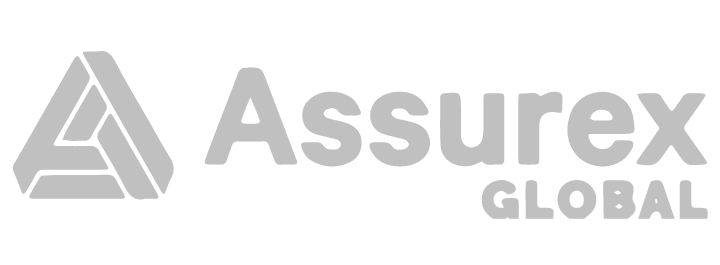
Navigating the world of organization strategy involves exploring risk management options. If your traditional insurance costs are higher than you would like, there are various alternative risk funding solutions for both commercial insurance and employee benefits.
This blog post illuminates some of options surrounding self-funded insurance, captives, risk retention groups (RRGs), and stop-loss policies, offering simple explanations on how each model could potentially to fortify your organization against uncertainties.
ALTERNATIVE RISK FUNDING OPTIONS
Moving away from traditional insurance, organizations are seeing the benefits of flexibility, control, and usually, better prices. Alternative risk funding options offer a world of choices, allowing organizations to customize their risk management strategies just the way they like.
Types of alternative risk funding options include:
SELF-FUNDED INSURANCE
In employee benefits, self-funded insurance operates under a model where an organization assumes direct financial responsibility for the costs of medical claims. Rather than paying predetermined premiums to an insurance organization, funds are set aside in a dedicated reserve. This reserve is used to cover healthcare costs as they occur. Organizations often partner with a third-party administrator (TPA) to manage the plan, process claims, and access healthcare provider networks, blending the flexibility of self-funding with the convenience of traditional coverage frameworks.
Advantages of adopting a self-funded insurance model include:
-
-
- Cost Control: Organizations can directly influence their healthcare spending, avoiding the profit margins and administrative costs embedded in traditional insurance premiums.
-
-
-
- Customization: Employers have the ability to tailor benefits to meet the specific needs of their workforce, improving satisfaction and potentially enhancing employee retention.
-
-
-
- Data Accessibility: Access to claims data allows organizations to analyze trends, identify areas for health intervention, and adjust the plan design accordingly.
-
However, there are considerations and potential disadvantages to be mindful of:
-
-
- Risk Exposure: Self-funding means assuming the risk of higher-than-expected claims, which can impact financial stability, particularly for smaller organizations without large financial reserves.
-
-
-
- Regulatory Compliance: Navigating the complex landscape of healthcare regulations requires diligence and can be more burdensome without the guidance of a traditional insurer.
-
-
-
- Administrative Demands: While TPAs can alleviate some of the workload, managing a self-funded plan requires active engagement and potential investment in resources to oversee the plan effectively.
-
CAPTIVES
Captives are essentially private insurers owned by the organizations they insure. They function by allowing an organization to set aside reserves for potential claims, similar to how traditional insurers collect premiums and pay out claims.
However, captives differ in that any underwriting profits—money left over from the reserves after claims are paid and expenses are covered—go back to the parent organization, not to an external insurance carrier. This setup allows organizations to directly access the reinsurance market, offering more flexibility in terms of policy types and coverage levels.
The advantages of using captives for insuring against various risks are multifaceted:
-
-
- Financial Control and Savings: Organizations can significantly reduce their insurance costs, retaining profits that would otherwise go to traditional insurance carriers. Additionally, captives can provide a tax-efficient way to accumulate reserves.
-
-
-
- Customization: Corporations have the autonomy to tailor the coverage precisely to their needs, enhancing protection and potentially improving employee benefits packages.
-
-
-
- Risk Management Enhancement: By owning a captive, organizations are more incentivized to control and reduce risks, leading to a safer workplace or more well-being initiatives and possibly lower claims.
-
However, forming and managing a captive comes with its own set of considerations and potential drawbacks:
-
-
- Capital Requirements: Establishing a captive requires significant upfront investment and reserves to cover potential claims, which can be a high barrier to entry for smaller organizations.
-
-
-
- Regulatory Compliance: Captives are subject to regulation, often in multiple jurisdictions, which can complicate their operation and increase oversight requirements.
-
-
-
- Risk Concentration: While captives allow for direct risk management, they can also lead to risk concentration, where a large, unexpected claim could have significant financial repercussions.
-
Transitioning into captives as an alternative risk funding solution requires careful consideration, planning, and management to ensure that the benefits outweigh the potential disadvantages.
RISK RETENTION GROUPS (RRGS)
Risk Retention Groups (RRGs) are liability insurance organizations owned by their members. Those members are often organizations from within the same industry or sector, coming together to insure risks associated with their organizations.
This collaborative effort enables members to assert more control over their insurance policies, including coverage terms, rates, and the handling of claims. By sharing risks, RRGs can achieve economies of scale, resulting in lower insurance costs for their members.
The advantages of RRGs for organizations, particularly in terms of employee benefits and commercial insurance, are significant:
-
-
- Cost Reduction: By pooling resources, members can often secure lower insurance premiums compared to traditional insurance markets.
-
-
-
- Coverage Tailoring: Members have the flexibility to customize insurance coverages to fit the specific needs of their industry or group, which can be particularly beneficial for unique or hard-to-insure risks.
-
-
-
- Claims Management Control: RRGs provide their members with the opportunity to have more direct involvement in claims handling processes, potentially leading to more favorable outcomes.
-
However, there are considerations and potential disadvantages to participating in RRGs that organizations should be aware of:
-
-
- Financial Risk: Members share in the financial risks of the group, meaning that adverse claims experiences can directly impact them more than in a traditional insurance scenario.
-
-
-
- Regulatory Complexity: Although RRGs are subject to less regulation than traditional insurance organizations, they must still comply with the regulatory requirements in the states where they operate, which can vary and be complex.
-
-
-
- Availability of Coverage: RRGs may not provide as broad a range of coverages as traditional insurers. This limitation may require members to seek supplemental coverage from other sources.
-
STOP-LOSS POLICIES
Essentially, a stop-loss policy is a contract between the employer and the insurance provider where the insurer agrees to cover claims that exceed a specified dollar amount, known as the attachment point. For employee benefits, this means protection against unexpectedly high medical claims per individual (specific stop-loss) or across the entire plan (aggregate stop-loss). In the realm of commercial insurance, stop-loss can mitigate financial losses from large or catastrophic claims, ensuring that an organization’s cash flow remains stable despite unpredictable incidents.
The advantages of integrating stop-loss policies into an alternative risk management strategy are substantial:
-
-
- Financial Stability: They provide a layer of financial security, ensuring that a single high-cost claim or an accumulation of claims does not jeopardize the organization’s financial health.
-
-
-
- Risk Management: Employers gain better control over their potential maximum loss, making financial planning more predictable and manageable.
-
-
-
- Flexibility and Customization: Organizations can choose their attachment points based on risk tolerance and financial capacity, allowing for tailored coverage that fits their specific needs.
-
However, there are several considerations and potential disadvantages to stop-loss policies that organizations should weigh carefully:
-
-
- Cost: Premiums for stop-loss insurance can be significant and vary based on factors like attachment points and past claims history, affecting the overall cost-efficiency of self-funding.
-
-
-
- Complexity: Understanding and selecting the right stop-loss coverage requires a thorough analysis of the organization’s claims history and financial capacity.
-
-
-
- Limitations and Exclusions: Like any policy, stop-loss insurance comes with exclusions and limitations. Organizations need to scrutinize these details.
-
These alternative risk funding solutions allow organizations to step beyond traditional models and tailor their risk management strategies precisely to their needs.
THE IDEAL CANDIDATE FOR ALTERNATIVE RISK FUNDING
However, not every organization is suited for alternative risk transfer solutions. These strategies require a particular breed of leadership, organizational profile, and a disposition towards innovation.
Visionary Leadership and Fiscal Responsibility
Organizations led by executives with a clear understanding of the benefits associated with alternative risk funding, a vision for future growth, and an inherent fiscal responsibility that drives them to seek out more cost-effective solutions are ideal.
Proaction Over Reaction
Organizations that are forward-thinking and proactive in their approach to insurance and risk management will find alternative risk funding models more accommodating. These organizations are more inclined to invest the time and resources necessary to build and manage the underwriting capabilities inherent in these models.
Appetite for Innovation
A cultural appetite for innovation is essential. Organizations that are open to adopting new technologies and willing to adjust operational strategies as needed will thrive when implementing alternative risk funding solutions.
STRATEGIC PARTNERSHIP WITH KAPNICK
At Kapnick, we don’t simply provide a menu of options; we collaborate with clients, understand their risk appetite, dissect their financials, and help design custom solutions that align perfectly with their long-term objectives.
Our team of experts leads clients through a consultation process that aims to empower and inform. We equip organizations with the knowledge to manage and finance their own risks through:
- examining historical loss data
- determining risk tolerance
- projecting future costs
Navigating alternative risk funding can feel daunting, which is why, at Kapnick, we view our role as guide for our clients. We start by evaluating the need for change from a risk and growth perspective, then explore the possibilities together, treating each client’s path to risk management enlightenment as unique.
While considering your best approach to commercial insurance and employee benefits, remember this: alternatives exist not only to provide refuge from risk but to capitalize on it. It’s time to think beyond the conventional.




